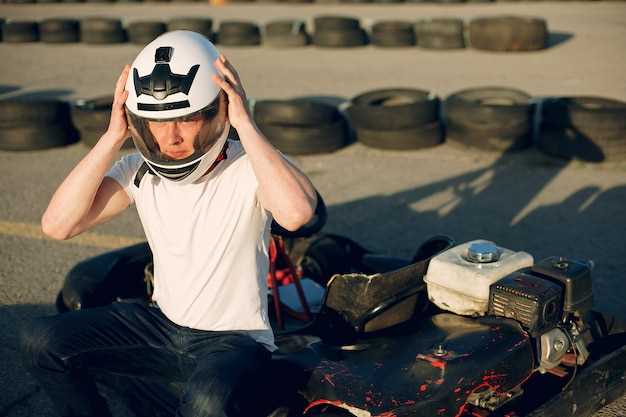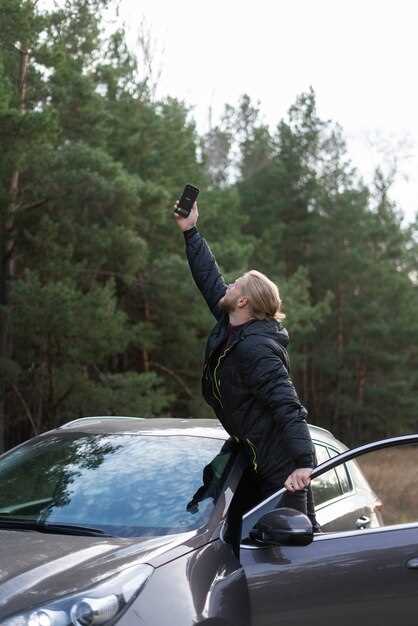
In the high-octane world of competitive racing, where speed and precision define success, the importance of defensive driving cannot be overstated. While many racers focus solely on achieving the fastest lap times and overtaking opponents, mastering the art of defense is equally crucial in securing victory. Understanding how to navigate the track–anticipating the moves of competitors and protecting one’s position–can be the difference between winning and succumbing to unnecessary risks.
Defensive driving in racing is not about recklessly avoiding challenges; rather, it involves a strategic approach to every turn and straightaway. By cultivating an awareness of the dynamics between vehicles, drivers can proactively defend their lines while maintaining optimal speed. This skill set not only enhances individual performance but also contributes to a safer racing environment, reducing the likelihood of collisions and ensuring that the competition remains fair and exciting.
Embracing a defensive mindset requires both mental acuity and practical skill–qualities that every racer must refine to stay ahead. From recognizing an opponent’s tendency to dive aggressively into corners to positioning one’s car to minimize vulnerabilities, defensive driving techniques are essential for achieving long-term success in the racing arena. In this article, we will explore the key strategies and principles that define defensive driving, equipping racers with the tools needed to thrive both on the track and in the heat of competition.
Understanding Race Dynamics for Safer Overtaking
Overtaking in competitive racing is a critical maneuver that requires a deep understanding of race dynamics to ensure safety for both the driver executing the pass and others on the track. Effective overtaking not only increases a driver’s position but also plays a vital role in maintaining a defensive strategy throughout the race.
The following key elements contribute to safer overtaking:
- Assessing Track Conditions:
- Analyze grip levels based on weather and track surface.
- Identify areas of the track where overtaking is feasible without compromising speed.
- Be aware of any potential hazards, such as debris or slower vehicles.
- Understanding Opponent Behavior:
- Observe the racing line of competitors to predict their next moves.
- Gauge their braking points and acceleration patterns for optimal overtaking opportunities.
- Be prepared for defensive tactics from opponents, including blocking maneuvers.
- Timing and Positioning:
- Choose the right moment to initiate an overtake, ideally when the opponent is less aware of a potential move.
- Position your car effectively, ensuring you have sufficient space to complete the overtaking maneuver.
- Maintain a balance between aggression and caution, ensuring that your actions do not endanger others.
- Utilizing Defense Strategies:
- After overtaking, focus on establishing a defensive position to prevent counterattacks.
- Keep an eye on mirrors to monitor opponents’ approaches and adjust your line accordingly.
- Communicate effectively with your team regarding your moves and racing situation to enhance overall strategy.
By mastering these aspects of race dynamics, drivers can enhance their overtaking skills while prioritizing safety. Developing an awareness of the environment, opponents, and defensive strategies will not only lead to successful maneuvers but will also cultivate a culture of safety within competitive racing.
Techniques for Maintaining Control During High-Speed Defense

In competitive racing, maintaining control while defending against overtaking maneuvers is crucial for success. High-speed defense requires a combination of precision, timing, and strategic awareness. Here are several techniques to enhance control during critical moments on the track.
Firstly, anticipate your opponent’s movements. By studying their racing patterns, you can prepare for potential overtaking attempts. Watching their positioning and the lines they take through corners allows you to predict when they will attempt to pass, providing you an opportunity to adjust your own line accordingly.
Secondly, focus on maintaining a stable trajectory. Smooth steering inputs are essential when defending your position at high speeds. Avoid abrupt changes in direction, which can unsettle the car and lead to loss of control. Instead, make gradual adjustments to your racing line to keep the vehicle balanced while anticipating incoming challenges.
Additionally, effective use of mirrors can enhance your awareness of competitors. Checking your mirrors frequently helps you gauge their proximity and intentions, allowing you to position your car optimally to defend your line without compromising your speed.
Incorporating defensive braking techniques is also vital. Under braking, aim to maintain a consistent speed without locking the wheels, which can result in skidding. Adjust your braking point slightly earlier when you sense an overtaking attempt, allowing you to execute a controlled turn while denying your opponent the chance to capitalize on your speed loss.
Lastly, communicate effectively with your team, as they can provide crucial feedback about approaching rivals. Employing team strategies can create opportunities to fend off overtaking attempts collaboratively, ensuring that you and your teammates maintain a competitive edge. Implementing these techniques can significantly improve your ability to defend against overtaking while maintaining control in high-pressure racing situations.
Key Communication Strategies with Competitors on Track

Effective communication is crucial in competitive racing, particularly when it involves overtaking maneuvers and maintaining safety. Clear signals and body language can significantly reduce the risk of accidents and enhance overall performance on the track.
One primary strategy is the use of visual signals. Drivers should make eye contact with competitors whenever possible, especially before overtaking. A slight nod or a hand signal can indicate an intention to pass, allowing both drivers to prepare for the maneuver. This non-verbal communication fosters trust and awareness during high-speed situations.
Additionally, utilizing the racing line can convey intentions. When a driver subtly adjusts their position on the track, it signals to others if they are planning to overtake or retreat. Staying predictable in movement enhances mutual understanding and minimizes sudden surprises that could lead to collisions.
Moreover, effective use of radio communication is vital, particularly in endurance races where teamwork is paramount. By sharing information about track conditions, approaching competitors, and planned overtaking strategies, drivers can maintain a coordinated approach, ensuring that all team members are on the same page. Clarity and brevity in these communications can prevent misunderstandings.
Finally, respecting the established etiquette of racing helps foster a positive atmosphere among competitors. Understanding unwritten rules, such as giving space during overtakes and acknowledging faster drivers, cultivates a supportive environment. This respect contributes to smoother transitions and reduces the potential for conflict on the track.



